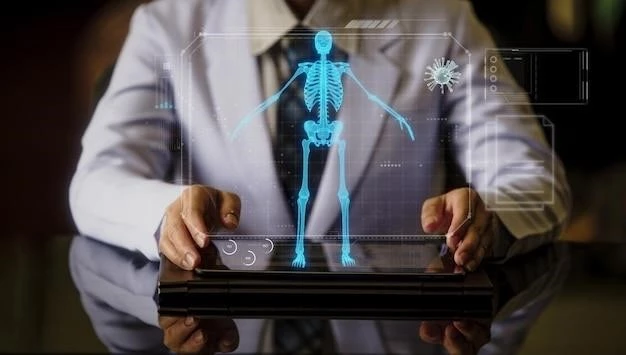Introduction
The information available on the internet provides insights into skeletal dysplasia, emphasizing the various types and characteristics associated with this condition. Understanding the complexities of skeletal dysplasia San Diego type is crucial in navigating the diagnosis and management of this rare genetic disorder.
Overview of Skeletal Dysplasia San Diego Type
Skeletal Dysplasia San Diego Type is a rare genetic disorder falling under the umbrella of platyspondylic lethal skeletal dysplasias (PLSDs). It is characterized by abnormalities in bone development, impacting the skeletal structure. Individuals with this condition may exhibit distinct features that differentiate it from other forms of skeletal dysplasia.
Clinical Features
Patients with Skeletal Dysplasia San Diego Type may present with a distinct set of clinical characteristics attributed to abnormalities in bone development. Understanding these features is crucial for accurate diagnosis and appropriate management of this rare genetic disorder.
Characteristics of Platyspondylic Lethal Skeletal Dysplasias (PLSDs)
Platyspondylic Lethal Skeletal Dysplasias (PLSDs) include conditions like Thanatophoric Dysplasias (TD) and the San Diego Type Dysplasias. These disorders have distinct bone abnormalities, such as short limbs, bowed femurs, and variations in craniosynostosis severity, which differentiate them from other skeletal dysplasias. Understanding these specific characteristics is essential for accurate diagnosis and management of individuals affected by PLSDs.
Specific Traits of Skeletal Dysplasia San Diego Type
Skeletal Dysplasia San Diego Type is characterized by specific traits such as short limbs, bowed femurs, and less severe abnormalities in the tubular bones compared to other forms of platyspondylic lethal skeletal dysplasias. Understanding these distinct characteristics plays a crucial role in diagnosing and managing individuals affected by this rare genetic disorder.
Genetic Basis
Understanding the genetic basis of Skeletal Dysplasia San Diego Type involves exploring mutations in the FGFR3 gene located on chromosome 4. These mutations are associated with distinct characteristics specific to this rare genetic disorder. Genetic testing plays a crucial role in diagnosing individuals affected by this condition.
FGFR3 Mutations in Skeletal Dysplasia San Diego Type
The skeletal dysplasia San Diego Type is associated with FGFR3 gene mutations, particularly the R248C mutation, which is often present in affected individuals. These mutations play a significant role in the unique characteristics and manifestation of this rare genetic disorder; Genetic testing for FGFR3 mutations is essential for diagnosing individuals with skeletal dysplasia San Diego Type.

Diagnosis and Classification
Accurate diagnosis and classification of Skeletal Dysplasia San Diego Type involve distinguishing it from other forms of skeletal dysplasias like Thanatophoric Dysplasia. Understanding the specific characteristics and genetic basis of this condition is crucial for appropriate management strategies and prognostic assessments.
Distinguishing Between Thanatophoric Dysplasia and San Diego Type
Thanatophoric Dysplasia (TD) and Skeletal Dysplasia San Diego Type exhibit differences in bone abnormalities and craniosynostosis severity that aid in their distinction. While TD showcases bowed femurs and micromelia, San Diego Type is characterized by specific traits like short limbs and bowed femurs with less severe tubular bone abnormalities. Understanding these distinctions is crucial for accurate diagnosis and appropriate management strategies.

Treatment Options
Exploring treatment options for individuals with Skeletal Dysplasia San Diego Type involves a multidisciplinary approach focusing on managing symptoms, improving quality of life, and addressing specific complications associated with this rare genetic disorder. Collaborating with a knowledgeable healthcare team can help tailor a treatment plan to suit the individual’s unique needs.
Management Strategies for Skeletal Dysplasia San Diego Type
When addressing management strategies for Skeletal Dysplasia San Diego Type, a comprehensive approach focusing on symptom alleviation, monitoring growth and development, and addressing associated health issues is essential. Collaborating with healthcare providers specialized in rare genetic disorders can assist in creating a personalized care plan to optimize the quality of life for individuals affected by this condition.
Prognosis
Understanding the prognosis for individuals diagnosed with Skeletal Dysplasia San Diego Type involves considering the impact of the condition on long-term health outcomes and quality of life. Collaborating with healthcare providers specialized in rare genetic disorders can help manage expectations and provide tailored support for individuals and their families navigating this rare genetic disorder.
Expectations for Individuals with Skeletal Dysplasia San Diego Type
When considering the prognosis for individuals diagnosed with Skeletal Dysplasia San Diego Type, it is important to understand the impact on their overall health and well-being. Collaborating with a supportive healthcare team and accessing appropriate resources can help individuals and their families navigate the challenges associated with this rare genetic disorder, leading to improved quality of life and enhanced coping strategies.
Research and Advances
Staying informed about the latest research and advancements in understanding Skeletal Dysplasia San Diego Type is crucial for healthcare professionals, researchers, and individuals affected by this rare genetic disorder. By keeping abreast of ongoing studies and breakthroughs, it is possible to contribute to improved diagnostic methods, treatment options, and overall care strategies for individuals with this condition.
Recent Developments in Understanding Skeletal Dysplasia San Diego Type
Ongoing research and advancements in the understanding of Skeletal Dysplasia San Diego Type focus on unraveling the intricate genetic mechanisms and pathophysiology underlying this rare condition. By delving into the genetic basis and unique characteristics associated with this disorder, researchers aim to enhance diagnostic accuracy, develop targeted therapies, and improve overall management strategies for individuals affected by Skeletal Dysplasia San Diego Type.
Support and Resources
Accessing support and resources for individuals with Skeletal Dysplasia San Diego Type is essential in navigating this rare genetic disorder. By connecting with relevant organizations and services specializing in rare diseases, individuals and their caregivers can find crucial support, information, and assistance tailored to their specific needs.
Organizations and Services for Individuals with Skeletal Dysplasia San Diego Type
For individuals with Skeletal Dysplasia San Diego Type, accessing relevant organizations and services specializing in rare genetic disorders can provide invaluable support. These resources can offer assistance, information, and tailored guidance to help individuals and their families manage the challenges associated with this condition. Collaborating with these organizations can lead to improved outcomes and enhanced quality of life for those affected by Skeletal Dysplasia San Diego Type.
